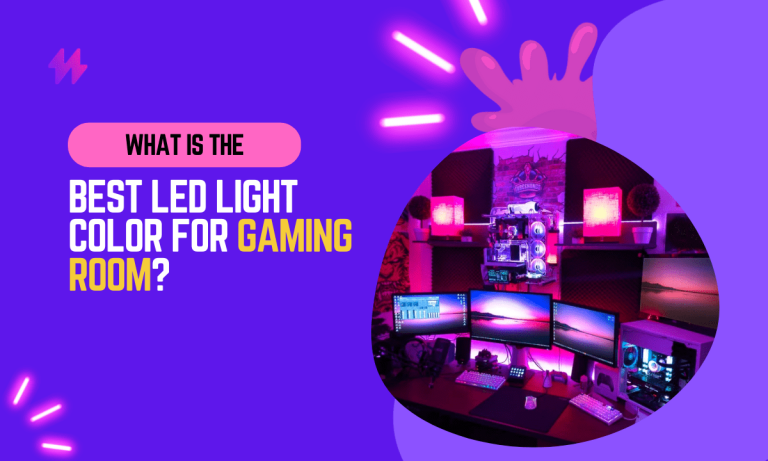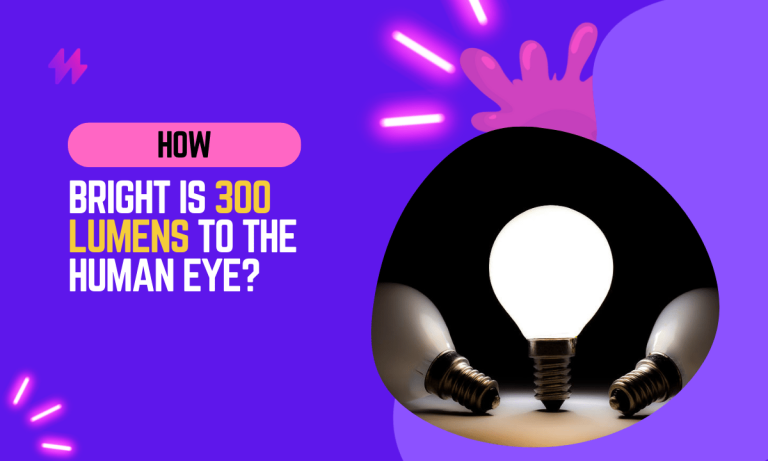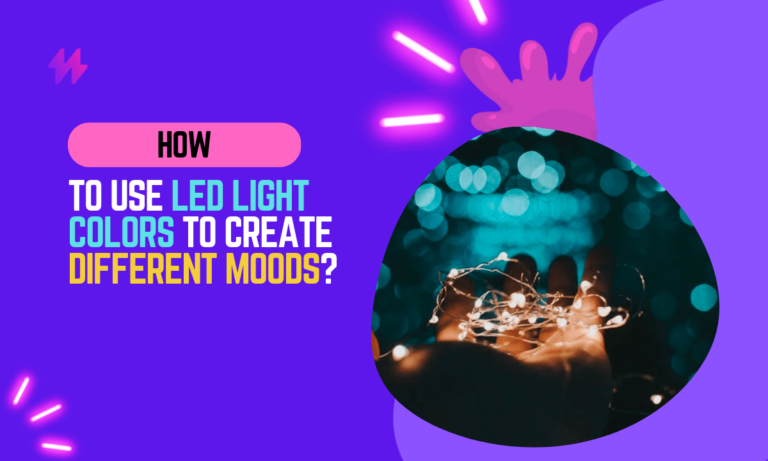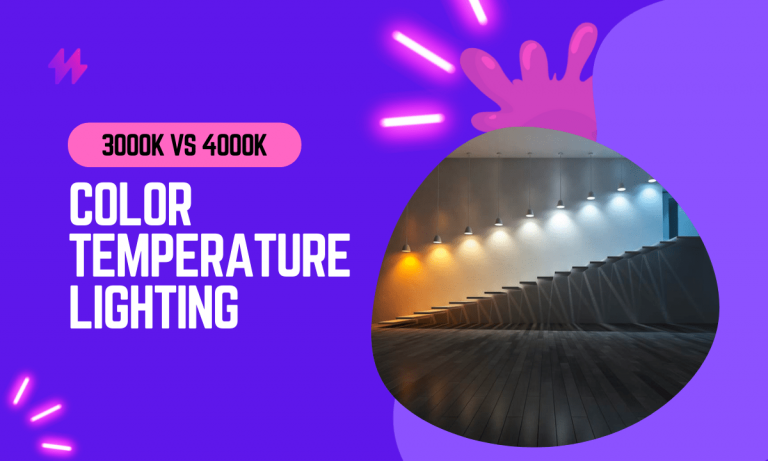How to Choose the Best Night Light Color for Sleep in 2024?
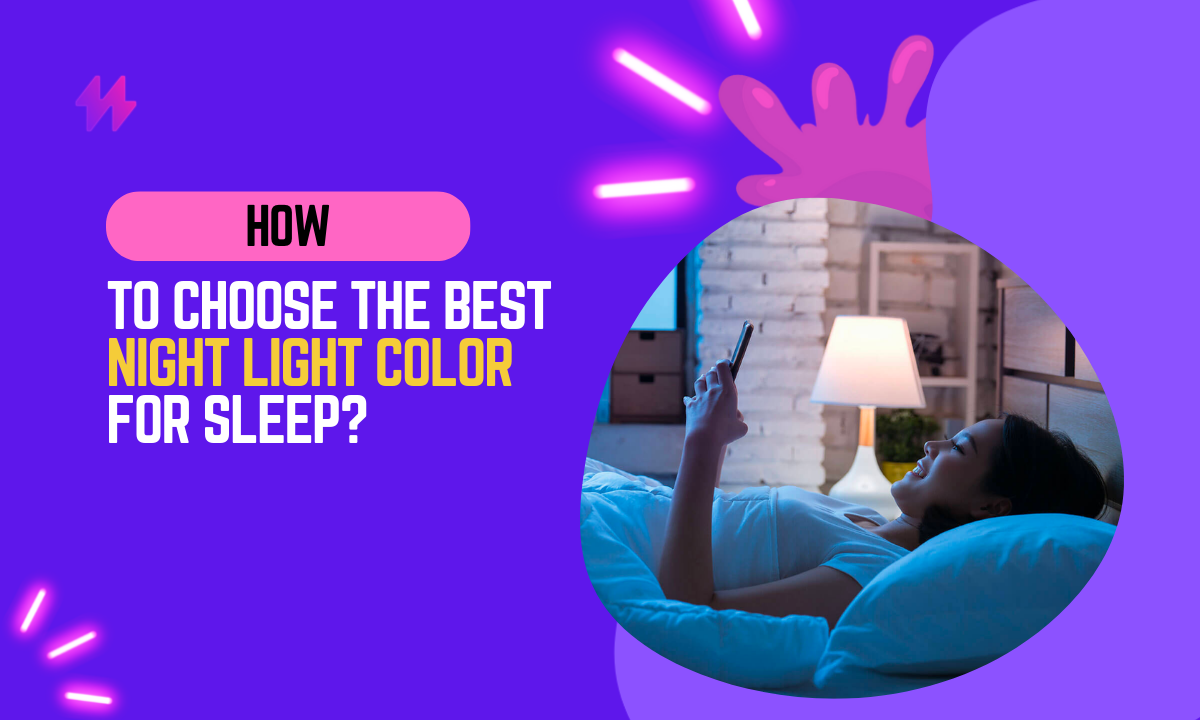
Do you have trouble falling asleep or staying asleep? If so, you may want to consider changing the color of your night light. Studies have shown that different colors of light can affect our sleep patterns, and choosing the right color can help you get a better night’s rest.
In this article, I will discuss the best night light color for sleep. I will also share some tips on how to choose the right night light for your needs. In my work, I have helped people choose the right night light color for their needs, and I have seen how this can make a significant difference in their sleep quality.
I believe that choosing the right night light color can be an important part of getting a good night’s sleep. If you are struggling with sleep, I encourage you to experiment with different colors of light until you find one that helps you to get the rest you need.
Transforming your sleep environment by utilizing the correct nightlight can have a profound impact on your sleep cycle. For optimal rest, it’s essential to understand the effects of various light colors on your circadian rhythm and select features like low color temperature or amber light bulbs that promote a calming atmosphere.
How to Choose the Best Night Light Color for Sleep in 2024: White Sleep Colors Guide
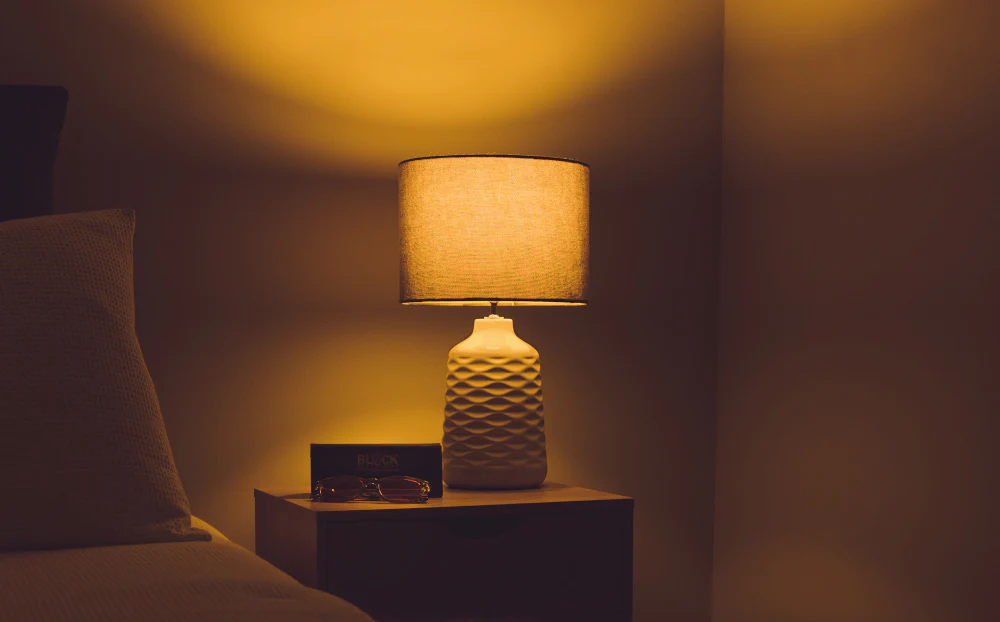
When it comes to choosing the best night light color for sleep, there are a few things to consider. First, you want to choose a color that is not too bright. Bright light can interfere with sleep, so you want to choose a night light that emits a soft, warm glow.
Second, you want to choose a color that is not too stimulating. Some colors, such as blue and green, can be stimulating and make it difficult to fall asleep. You want to choose a more relaxing color, such as red, orange, or yellow.
Finally, you want to choose a color that is comfortable for you. Some people find that certain colors are more relaxing than others. Experiment with different colors until you find one that you find most helpful for sleep.
The following are some of the best night light colors for sleep:
- Blue
- Green
- Violet
- Light gray
- White
These colors are all cool and have a calming effect on the mind and body. They can help to promote relaxation and sleep.
Here are some tips for choosing the right night light for you:
- Choose a night light that emits a soft, warm glow.
- Choose a night light that is not too stimulating.
- Choose a night light that is comfortable for you.
- Experiment with different colors until you find one that helps you to get the rest you need.
The color of your night light can have a significant impact on your sleep quality. Some colors are more conducive to sleep than others, and choosing the right one can help you get a better night’s rest.
Also read: Can You Sleep with LED Strip Lights On?
When selecting the best color light for your night light, consider how different colors affect your sleep-wake rhythm and overall sleep quality. Using red light lamps or warm-hued nightlights can create a calming environment that encourages sleepiness and helps you avoid the harmful blue light that disrupts your circadian rhythm and may lead to sleep disorders.
Optimal Night Light Colors for Sleep: A Comprehensive Guide

When it comes to sleep, the best colors are cool colors, such as blue, green, and violet. These colors have a calming effect on the mind and body and can help to promote relaxation and sleep.
Warm colors, such as red, orange, and yellow, are not as conducive to sleep. These colors can be stimulating and can interfere with sleep.
While cool colors can effectively promote relaxation, it’s important to combine softer lighting with strategies that enhance your sleep routine. Incorporating blue light blocking glasses can further mitigate the effects of artificial lights, fostering a more restorative sleep environment and potentially avoiding circadian rhythm sleep disorders.
Choosing the Right Night Light Color for Sleep: A Guide
When choosing a night light for sleep, it is important to consider the following factors:
- The color of the light
- The brightness of the light
- The location of the light
The color of the light is the most important factor to consider. As mentioned above, cool colors are best for sleep, while warm colors are not as conducive to sleep.
The brightness of the light is also important. A night light should be bright enough to illuminate the room, but not so bright that it is disruptive to sleep.
The location of the light is also important. The best place for a night light is in a location where it will not shine directly into your eyes.
Also read: Soft White vs Warm White: LED Light Color
When it comes to enhancing your optimal sleep environment, consider the application of light therapy to aid in combating sleep deprivation. Understanding the timing of sleep and the effects of various light wavelengths will empower you to utilize modern light fixtures effectively for a restorative night’s rest.
Utilizing a Night Light for Sleep: A Comprehensive Guide
To use a night light for sleep, follow these steps:
- Choose a night light that is the right color, brightness, size, and type for your needs.
- Place the night light in a convenient location in your bedroom.
- Turn on the night light before you go to bed.
- If you wake up in the middle of the night, use the night light to help you find your way around without turning on a bright light, which can disrupt sleep.
The night light should help to create a relaxing environment and promote sleep.
Also read: How to use LED Light colors to create different moods?
Setting up a night light with the appropriate color can significantly influence your ability to achieve good sleep, especially if you are sleep-deprived. Opting for warm relaxing colors or red light bulbs can help create a calming light color that ensures your sleep environment is conducive to rest and minimizes sleep inertia.
FAQs: Your Guide to the Best Night Light Color for Sleep
Below you can find the most frequently asked questions about the best night light color for sleeping comfortably.
Below you can find the most frequently asked questions about the best night light color for sleeping comfortably. The right color night lights can significantly influence your sleep quality, especially for those suffering from a lack of sleep. Utilizing warm light, like amber or red-light options, may help create an ideal calming environment, improving your overall sleep experience.
Finding the Best Night Light Color for Sleep: Tips and Insights
There is no one-size-fits-all answer to this question, as the best night light color for sleep will vary depending on individual preferences. However, some general guidelines include:
There is no one-size-fits-all answer to this question, as the best night light color for sleep will vary depending on individual preferences. However, some general guidelines include: Understanding your own sleep-wake signals can significantly assist in how to choose the best night light color for sleep in 2024. Additionally, implementing dimmer light with warm color temperatures, like red night lights or warm amber spectrum light, can help create a calming environment that promotes better sleep quality.
- Blue light should be avoided at night, as it can interfere with sleep. Blue light is emitted by electronic devices such as smartphones, tablets, and computers, and it has been shown to suppress melatonin production, which is a hormone that helps regulate sleep.
- Warm colors, such as red, orange, and yellow, are typically more conducive to sleep than cool colors, such as blue and green. This is because warm colors have a calming effect on the mind and body, which can help promote relaxation and sleep.
- The brightness of the night light should also be considered. A night light that is too bright can be disruptive to sleep, while a night light that is too dim may not be effective in providing enough light to help you find your way around in the dark.
Understanding the Risks of Using a Night Light for Sleep Concerns
There are a few potential risks associated with using a night light, including:
- Blue light exposure can interfere with sleep.
- Too much light can be disruptive to sleep.
- Night lights can be a fire hazard if they are not properly installed.
You may also like: How To Make A Light Bulb Less Bright Effectively?
Using a night light can enhance your sleep environment, but it is crucial to select the right **calming colors** that do not interfere with your natural **sleep-wake rhythm**. A well-chosen night light, such as a **red night lights** or **amber-wavelength light**, can help maintain a tranquil atmosphere in your dark room, promoting better sleep quality.
Night Light Color Selection for Optimal Sleep: Conclusion
In conclusion, selecting the optimal night light color for sleep is crucial for enhancing sleep quality and overall health. As research into the effects of light on sleep deepens, it has become clear that not all colors affect our circadian rhythms in the same way. Cooler light colors, like blue and white, have been shown to inhibit the production of melatonin, the hormone responsible for regulating sleep, making them less ideal for night lighting. Conversely, warmer tones, such as red and orange, are beneficial in promoting sleep as they have minimal impact on melatonin production. These insights are particularly useful in 2024, as technological advancements have allowed for greater customization of night light features, enabling users to select and modify their night light’s color based on scientifically backed recommendations.
Moreover, when choosing a night light for sleep, it’s important to consider the specific needs of the user. For instance, individuals who require a night light for nighttime navigation or for children’s rooms may find that slightly brighter and cooler hues are necessary to provide sufficient illumination without being overly stimulating. On the other hand, for those particularly sensitive to light during sleep, opting for a dim, red-toned light can be the best choice. The advent of smart lighting technology now also allows for night lights to be programmed to change colors and intensity based on the time of night, aligning with the body’s natural sleep-wake cycle. Thus, the decision on the best night light color for sleep must balance personal comfort, the particular sleep environment, and the latest research on light’s physiological impacts, ensuring that the chosen solution provides the perfect backdrop for a restful night’s sleep in 2024.
How To Choose The Best Night Light Color For Sleep In 2024 | Importance of Night Light Color for Sleep Quality
Choosing the right night light color can significantly enhance sleep quality and overall well-being in 2024. Understanding how different colors affect sleep patterns is essential; for instance, bright lights and cooler colors such as blue light can promote alertness and interfere with restorative sleep by acting as a sleep-wake signal. In contrast, shades like red and warm amber offer calming, relaxing light colors that help create a soothing atmosphere for bedtime. Modern light sources, like LED lamps and colored light bulbs, provide flexibility in brightness levels and color temperatures, making it easier to achieve the perfect ambiance. A well-chosen night light, whether it be a solid night fixture or a dimly lit floor lamp, can help prevent sleep inertia and ensure a peaceful night. For those concerned about light exposure, utilizing lights that mimic the natural sunset or employing a sleep mask can further enhance the sleep environment. Understanding how to choose the best night light color for sleep in 2024 is a vital step toward establishing a healthy sleep routine.
How to Choose the Best Night Light Color for Sleep in 2024 | Effects of Different Colors on Sleep Patterns
Choosing the appropriate color night light for sleep is crucial in ensuring a restful night. Many night lights emit white light or blue lights which can disrupt the sleep-wake rhythm. Blue and cool-toned colors, although bright and energizing, can hinder the production of melatonin, essential for sleep. Instead, selecting warm amber-spectrum light can create a calming atmosphere, signaling to the body that it is time to wind down. For those who prefer colorful lamps, dimmer light and softer hues like red or yellow light can minimize the risk of bad sleep by promoting relaxation.
The light spectrum also plays a significant role in sleep quality. Cool-colored light, such as blue-green light, can lead to sleep inertia, making it hard to wake up refreshed. On the other hand, warm white light or red light helps in enhancing the sleep environment. Using light-emitting diodes (LEDs) with a light color temperature conducive to sleep can be beneficial. Green light wavelengths have been shown to provide appropriate calming effects, which can be helpful for restless sleepers. Understanding the impact of various light colors and intensities is essential for anyone looking to enhance their nightly rest.
Significance of Light Intensity in Sleep Environment
Light intensity plays a crucial role in creating an optimal sleep environment. High energy colors like white nightlight and cool light can disrupt the natural sleep-wake rhythm, making it necessary to select softer alternatives. Light-hued bulbs such as warm amber color and colored light bulbs are recommended for night time use. These options emit a calm-inducing color that encourages relaxation without causing sleep inertia prevention issues. Red plugin night and red-light bulbs can help in achieving a serene ambiance, especially when combined with a room darkened by blackout curtains.
The right intensity can also dictate how effective sleep lights are at promoting restful sleep. Too bright room light can mimic daylight, leading to increased alertness and difficulty falling asleep. Specialized light products that provide sufficient brightness without overwhelming the senses, such as pendant lights or free light bulbs, are ideal for bedtime routines. Sleep advisors often suggest avoiding artificial blue light emitted from screens and instead opt for gentle light reminiscent of candlelight. This approach not only aids in transitioning to sleep but also assists in keeping your room nice warm and relaxing for the duration of the night.
Factors to Consider When Choosing a Night Light Color
Selecting the right night light color involves understanding its effects on sleep patterns and personal preferences. How to Choose the Best Night Light Color for Sleep in 2024 requires awareness of how different hues interact with the body’s natural sleep-wake rhythm. For instance, cool light encourages alertness, making it unsuitable for nighttime use. Green light colors and warm hues create a calm atmosphere, while a red glow is often favored for its somnogenic properties. Incorporating ambient light, such as colored light bulbs in table lamps or floor lamps, can support a relaxing environment. It’s essential to minimize exposure to cold light screens before bedtime as bright lights promote wakefulness. Using warm, low-intensity night lights can ease the transition into sleep, helping block disruptive lights that might interfere with rest. Certified sleep science suggests that the right color and intensity can improve sleep quality, making the choice of night lights crucial for those with sleep-wake rhythm disorders.
Personal Preferences and Sleep Habits
Personal sleep habits greatly influence how to choose the best night light color for sleep in 2024. Some individuals find that a nice warm relaxing light, like red or pure amber light, helps them transition from the evening to sleep. Others may prefer a soft green light spectrum for its calming effects, which can enhance the sleep environment. Those who enjoy reading before bed often utilize book lights or changing-color lamps that emit less blue light, ensuring not to disturb their sleep cycles. For many, the goal is creating a nighttime routine that convinces the mind it’s time to wind down while still providing enough light for necessary activities.
Individual taste in color also plays a significant role in selecting the ideal night light. A favorite color may evoke feelings of comfort, making it easier to achieve possible sleep. For example, some may opt for colored light bulbs that align with their evening preferences, while others prefer common light bulbs that provide essential visibility without harshness. The challenge is to find a balance between having enough light to avoid stumbling in complete darkness while not introducing screen lights or clock-blue light that can disrupt sleep. Consulting a sleep physician can also assist in determining how specific wavelengths affect light receptors and overall sleep quality.
AgeRelated Considerations for Night Light Colors
As individuals age, their sensitivity to light and preferences can shift, influencing how to choose the best night light color for sleep in 2024. Older adults may benefit from colored light bulbs that emit warm tones, such as red or amber, which are known to suppress melatonin production less effectively than blue light. This is crucial since blue light keeps the brain awake and disrupts sleep patterns. During twilight hours, a soft, somnogenic light can help signal to the brain that it’s time to wind down, thereby promoting healthy light exposure.
For those who require reading lamps or emergency lights, selecting illumination that minimizes harsh brightness will aid in relaxation. Adjustable-sized lamps with dimming capabilities allow for customization based on personal preferences. It’s essential to consider visual color visible in the surroundings, as overexposure to bright lights can block lights that are meant to help the body transition to sleep. Zero flicker technology is also important in maintaining a calm atmosphere, reducing distractions, and ensuring that the night doesn’t become a hindrance to rest.
Popular Night Light Colors and Their Benefits
Understanding the benefits of various colored lights is essential for maximizing sleep quality. The question of how to choose the best night light color for sleep in 2024 lies in recognizing how different hues affect our bodies. For instance, blue light is often associated with alertness, which can disrupt sleep by mimicking daylight and suppressing melatonin production. On the other hand, red light has been shown to have a calming effect, as it tends to attenuate the intensity of light emissions, making it easier to wind down before bed. For those seeking alternatives, a noblue amber sleep light can provide a gentle glow that doesn’t interfere with circadian rhythms. Using coloured light bulbs in suspension battery lights can further enhance the sleep environment without overwhelming the senses. Creating a space that feels inviting while maintaining a level of full darkness may improve overall sleep quality, making it important to understand how to optimize these color choices for individual needs.
Blue Light: Benefits and Drawbacks for Sleep
Blue light can significantly impact sleep quality, making it essential to understand its effects. Light emitted by screens and other devices often mimics the natural blue light found in daylight. This can confuse the brain into thinking it is still daytime, which suppresses melatonin production and disrupts the body’s circadian rhythm. Understanding how to choose the best night light color for sleep in 2024 necessitates recognizing that blue light may be beneficial during the day for alertness but is not ideal during the night.
On the other hand, blue light is also employed in certain light therapy treatments to help alleviate seasonal affective disorder and regulate sleep patterns. The intensity and timing of blue light exposure play a crucial role in its effects. Light attenuates in effectiveness based on the time of day, so its use at night isn’t typically recommended. Instead, red light is often suggested as it has less impact on melatonin levels and promotes a more restful environment. Knowing how to choose the best night light color for sleep in 2024 involves balancing the advantages of blue light with its potential drawbacks.
Red Light: Why It’s Often Recommended for Sleep
Red light is often recommended for sleep due to its unique properties that support relaxation. This color light emits wavelengths less disruptive to the body’s natural circadian rhythms. Research suggests that red light suppresses melatonin production less than other colors, which is crucial for maintaining a healthy sleep cycle. Understanding how to choose the best night light color for sleep in 2024 can greatly enhance your nighttime environment and overall rest.
The effect light has on sleep quality varies significantly depending on its hue. Light therapy works effectively with red light, as it mimics the natural sunset and promotes a soothing ambiance. The calming nature of red light convinces many to incorporate it into their nighttime routines. For those seeking better sleep, knowing how to choose the best night light color for sleep in 2024 can lead to improved restfulness and more rejuvenating sleep experiences.
Best Practices for Using Night Lights
Placement and timing are critical elements in optimizing the benefits of night lights for sleep. Positioning the light away from direct line of sight can prevent disruptions in melatonin production. Choosing a soft colour light, such as red or amber, can promote relaxation and a seamless transition to sleep. It’s essential to consider how to choose the best night light color for sleep in 2024, particularly in terms of light intensity and warmth. Placing the night light in an area where it can provide convenience without overwhelming brightness can create an ideal sleep environment. The way light mimics natural conditions can greatly influence how restful the night becomes, so finding a suitable time to turn on the night light can also impact overall sleep quality.
Placement and Timing for Optimal Sleep
Proper placement of a night light can greatly enhance your sleep experience. Positioning the light near the floor or in a corner of the room minimizes direct glare while providing enough illumination for nighttime activities. This setup not only promotes a calming atmosphere but also ensures that the night light serves its purpose of guiding you without disrupting sleep. Understanding how to choose the best night light color for sleep in 2024 involves considering where it will be most effective.
Timing plays a critical role in optimizing your sleep environment. Turning on the night light just before bedtime can help signal to your body that it’s time to wind down. Using automated timers or smart lights can help establish a consistent routine, fostering a sense of calm as you prepare for sleep. Properly managing the light could help you understand how to choose the best night light color for sleep in 2024 for your specific needs.
Adjusting Brightness Levels for Better Sleep
Effective brightness levels play a crucial role in creating an optimal sleep environment. The right intensity can help signal to your body when it’s time to wind down. For those exploring how to choose the best night light color for sleep in 2024, adjusting brightness ensures that the light does not disrupt the natural production of melatonin. Soft, dim lights can foster relaxation and improve the quality of your rest while maintaining a sense of security throughout the night.
Consider experimenting with varying levels of brightness to find what works best for your unique preferences. Some might prefer a gentle glow that provides comfort without overwhelming the senses. Understanding how to choose the best night light color for sleep in 2024 also involves recognizing how different intensities can affect individual sleep habits. Night light convinces may come in handy by providing just enough illumination while preserving a restful atmosphere ideal for sleep.


